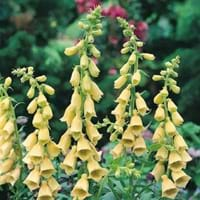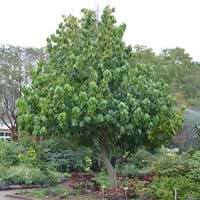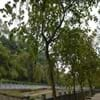Life Span
Biennial
Annual and Perennial
Type
Flowering Plants, Perennial
Tree
Origin
Southern Europe, Russia/Siberia, Turkey
Northeastern United States, Mid-Atlantic United States, Southeastern United States, Canada
Types
Carillon, Temple Bells
Not Available
Habitat
Terrestrial
Deep, Fertile bottom land, Hilly upland habitat, Well Drained
USDA Hardiness Zone
3-8
6-9
Sunset Zone
21,22
2a, 2b, 3a, 3b, 4, 5, 6, 7, 8, 9, 14, 18, 19, 20, 21
Habit
Upright/Erect
Oval or Rounded
Flower Color
Light Yellow, Brown
Purple, Burgundy, Brown
Flower Color Modifier
Bicolor
Bicolor
Fruit Color
Non Fruiting Plant
Yellow, Green, Yellow green, Brown
Leaf Color in Spring
Green
Green, Dark Green
Leaf Color in Summer
Green
Green, Dark Green
Leaf Color in Fall
Green
Yellow, Copper, Orange Red
Leaf Color in Winter
Light Green
Not Available
Plant Season
Spring, Summer
Spring, Summer, Fall
Sunlight
Full Sun, Partial Sun
Full Sun, Partial Sun, Partial shade
Growth Rate
Medium
Medium
Type of Soil
Clay, Loam
Clay, Loam, Sand
The pH of Soil
Neutral
Acidic, Neutral
Soil Drainage
Well drained
Average
Bloom Time
Early Summer, Summer
Early Spring, Spring
Tolerances
Not Available
Not Available
Where to Plant?
Ground, Pot
Ground
How to Plant?
Divison, Seedlings, Seperation
Seedlings, Transplanting
Plant Maintenance
Medium
Medium
Watering Requirements
Requires watering in the growing season
Requires regular watering, Requires watering in the growing season, Water Deeply
In Summer
Lots of watering
Lots of watering
In Spring
Moderate
Moderate
In Winter
Average Water
Average Water
Soil pH
Neutral
Acidic, Neutral
Soil Type
Clay, Loam
Clay, Loam, Sand
Soil Drainage Capacity
Well drained
Average
Sun Exposure
Full Sun, Partial Sun
Full Sun, Partial Sun, Partial shade
Pruning
cut main flower spike
Remove damaged leaves, Remove dead branches, Remove dead leaves, Remove dead or diseased plant parts, Requires little pruning
Fertilizers
All-Purpose Liquid Fertilizer
Magnesium sulphate, Nitrogen, Phosphate, Phosphorous, Potassium
Pests and Diseases
Downy mildew, Leaf spot, Powdery mildew
Red blotch
Plant Tolerance
Not Available
Not Available
Flower Petal Number
Single
Single
Foliage Texture
Medium
Coarse
Foliage Sheen
Matte
Matte
Attracts
Not Available
Birds, Butterflies
Allergy
Blurred vision, Confusion, Depression, Diarrhea, Disorientation, drowsiness, Fainting, Halos around objects, Headache, Irregular or slow heartbeat, Lethargy, Loss of appetite, Low blood pressure, Nausea, Rash, Stomach pain, Vomiting, weakness
breathing problems, Dizziness, Itchiness, Nausea, Rash, Stomach pain, Swelling
Aesthetic Uses
Showy Purposes
Not Used For Aesthetic Purpose
Beauty Benefits
Not Available
Good for skin and hair, Skin cleanser
Environmental Uses
Air purification
Air purification, Shadow Tree
Medicinal Uses
No Medicinal Use
Malaria, Rheumatism, Urine infections, Vomiting
Part of Plant Used
Whole plant
Flowers, Fruits, Leaves
Other Uses
Used as Ornamental plant
Making Shampoo, Used As Food, Used for its medicinal properties
Used As Indoor Plant
No
No
Used As Outdoor Plant
Yes
Yes
Garden Design
Bedding Plant, Cutflower, Mixed Border
Edible, Feature Plant, Fruit / Fruit Tree, Mixed Border, Shade Trees
Botanical Name
DIGITALIS grandiflora
ASIMINA triloba
Common Name
Large Yellow Foxglove, Yellow Foxglove
Pawpaw
In Hindi
पीला Foxglove
गंदा संयंत्र
In German
Gelber Fingerhut
Papaya Pflanze
In French
Digitale Jaune
usine de papaye
In Spanish
Foxglove amarillo
planta de la papaya
In Greek
κίτρινο Foxglove
φυτό pawpaw
In Portuguese
Foxglove amarelo
planta mamão
In Polish
żółty naparstnica
pawpaw roślin
In Latin
Yellow Foxglove
quince herba
Phylum
Magnoliophyta
Magnoliophyta
Class
Magnoliopsida
Magnoliopsida
Order
Scrophulariales
Magnoliales
Family
Scrophulariaceae
Annonaceae
Genus
Digitalis
Asimina Adans
Clade
Angiosperms, Asterids, Eudicots
Angiosperms, Magnoliids
Tribe
Not Available
Not Available
Subfamily
Not Available
Not Available
Number of Species
Not Available
Not Available
Properties of Yellow Foxglove and Pawpaw
Wondering what are the properties of Yellow Foxglove and Pawpaw? We provide you with everything About Yellow Foxglove and Pawpaw. Yellow Foxglove doesn't have thorns and Pawpaw doesn't have thorns. Also Yellow Foxglove does not have fragrant flowers. Yellow Foxglove has allergic reactions like Blurred vision, Confusion, Depression, Diarrhea, Disorientation, drowsiness, Fainting, Halos around objects, Headache, Irregular or slow heartbeat, Lethargy, Loss of appetite, Low blood pressure, Nausea, Rash, Stomach pain, Vomiting and weakness and Pawpaw has allergic reactions like Blurred vision, Confusion, Depression, Diarrhea, Disorientation, drowsiness, Fainting, Halos around objects, Headache, Irregular or slow heartbeat, Lethargy, Loss of appetite, Low blood pressure, Nausea, Rash, Stomach pain, Vomiting and weakness. Compare all the properties and characteristics of these two plants. Find out which of these plant can be used as indoor plant. If you are interested to decorate your house and garden, find out aesthetic uses, compare them and select the plant which will beautify your surrounding. Along with beautification, try comparing medicinal and edible uses of Yellow Foxglove and Pawpaw and you can choose the plant having best and most benefits.
Season and Care of Yellow Foxglove and Pawpaw
Season and care of Yellow Foxglove and Pawpaw is important to know. While considering everything about Yellow Foxglove and Pawpaw Care, growing season is an essential factor. Yellow Foxglove season is Spring and Summer and Pawpaw season is Spring and Summer. The type of soil for Yellow Foxglove is Clay, Loam and for Pawpaw is Clay, Loam, Sand while the PH of soil for Yellow Foxglove is Neutral and for Pawpaw is Acidic, Neutral.
Yellow Foxglove and Pawpaw Physical Information
Yellow Foxglove and Pawpaw physical information is very important for comparison. Yellow Foxglove height is 60.00 cm and width 30.00 cm whereas Pawpaw height is 1,371.60 cm and width 30.00 cm. The color specification of Yellow Foxglove and Pawpaw are as follows:
Yellow Foxglove flower color: Light Yellow and Brown
Yellow Foxglove leaf color: Green
Pawpaw flower color: Purple, Burgundy and Brown
- Pawpaw leaf color: Green and Dark Green
Care of Yellow Foxglove and Pawpaw
Care of Yellow Foxglove and Pawpaw include pruning, fertilizers, watering etc. Yellow Foxglove pruning is done cut main flower spike and Pawpaw pruning is done Remove damaged leaves, Remove dead branches, Remove dead leaves, Remove dead or diseased plant parts and Requires little pruning. In summer Yellow Foxglove needs Lots of watering and in winter, it needs Average Water. Whereas, in summer Pawpaw needs Lots of watering and in winter, it needs Average Water.





